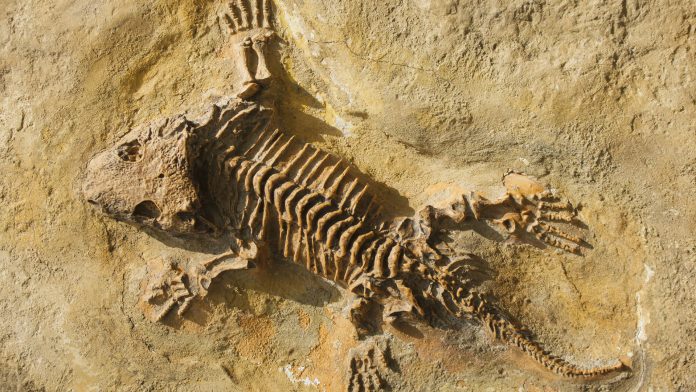Researchers from the University of Bristol, along with Barcelona’s Universitat Pompeu Fabra and University College London, have discovered that the earliest land tetrapods had fewer skull bones than extinct and living fish, which restricted their evolution for millions of years.
The researchers analysed fossil skulls of animals across the transition from aquatic to terrestrial environments and discovered that tetrapods had more complex connections between skull bones than their ancestors and descendants. These complicated structures were found to have restricted the creature’s ability to evolve to changing climates.
What were early tetrapods?
Tetrapod is a term that can be given to any living creature with four feet, so all land-dwelling vertebrates can be considered tetrapods.
The early tetrapods were the first vertebrates to walk on land, beginning their land conquest in the Palaeozoic era around 360 million years ago.
They were traced as the earliest land mammals that had limbs and digits, which makes them the ancestors of all living beings, including amphibians and humans.
Findings of the research
The research was published in Science Advances this week, which studied the organisation of skull bones in over 100 different living and fossil animals in order to understand the evolution of an early tetrapod skull.
James Rawson, lead author of the publication, said: “Tetrapod skulls generally have fewer skull bones than their fish ancestors, but simply counting the number of bones misses some important data.
“We used a technique called network analysis, where the arrangement of skull bones is recorded in addition to bone number.”
Dr Borja Esteve-Altava, an expert in this technique, said: “Network analysis provides a sound mathematical framework to quantify anatomical relations among bones: a kind of data often overlooked in most studies on morphological evolution.”
Because tetrapods were found to have fewer skull bones than fish, it meant the organisation of their skulls were more complex.
Rawson said: “It might seem strange, but having fewer bones means each of those bones must connect with more of its neighbours, resulting in a more complex arrangement. Modern frogs and salamanders had the most complex skulls of all the animals we studied.”
“The skulls of the earliest tetrapods also became more consolidated into a single unit, whereas their fish ancestors had skulls made of several distinct sections.”
Looking at different skull structures over time led to the discovery that skull arrangement variety dropped when tetrapods originated.
Professor Emily Rayfield, senior author of the study, said: “We were surprised to find these changes to the skull seemed to limit tetrapod evolution, rather than promoting radiation to new habitats on land. We think that the evolution of a neck, extinction events or a bottleneck in skull development may be responsible.”
Mr Rawson concluded: “We also see a similar drop in structural variability for the limb bones in early tetrapods, but the drop in the limbs happens 10 million years earlier. It seems that different factors were affecting skull and limb evolution in early tetrapods, and we have so much more to learn about this crucial time in our own evolutionary history.”





